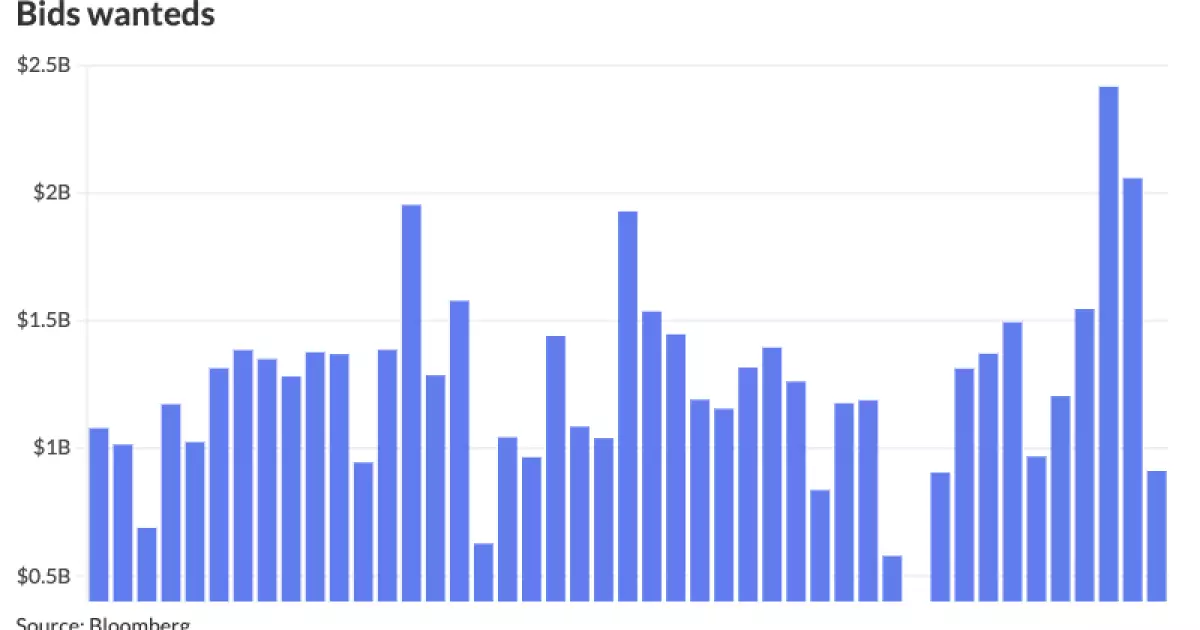The municipal bond market remains a complex web where various economic factors interplay, leading to fluctuations in bond yields and overall performance. Recently, the market has demonstrated a stable yet slightly weaker tone, primarily in response to mixed signals from the U.S. Treasuries and equity markets. Such trends reflect an ongoing battle between supply and demand dynamics, as municipal yields struggle to meet investor expectations amid rising inflation concerns.
This environment has led to the adjustment of triple-A municipal bond yields, which saw cuts of up to two basis points. This downward trend is noteworthy, especially for those tracking the relationships between different maturities of municipal securities compared to U.S. Treasuries (USTs). In this regard, the ratios exhibited significant stability yet indicated some areas of weakening, with indications of a range of 61% to 80% for various maturity ranges.
The recent Consumer Price Index (CPI) data aligning with market expectations has brought inflation back into focus. As noted by Jason Wong, the vice president of municipals at AmeriVet Securities, persistent inflation has largely influenced the upward movement of yields in recent weeks. The municipal bond market has followed a similar trajectory as USTs, albeit at a more moderated pace, signaling that investor sentiment is cautiously optimistic.
For many analysts, the MMD (Municipal Market Data) curve, which saw cuts ranging between seven to thirteen basis points, illustrates mounting pressures as month-to-date returns dipped into negative territory. Municipal bonds reported a decline of -0.54%, dropping year-to-date returns to approximately 1.99%. Considering that these trends are unfolding in December—a traditionally volatile month for markets as year-end approaches—experts like Daryl Clements from AllianceBernstein underscore the importance of monitoring movements closely, especially as the Fed is poised to address potential interest rate cuts.
Market Dynamics and Issuance Trends
The latter part of the year typically witnesses a decrease in issuance as financial entities strategize for the new year. This week’s issuance is expected to plummet to approximately $2.5 billion, primarily driven by a significant $1.5 billion deal from the New York Transitional Finance Authority. Such declines in issuance may result in scarcity as the municipal market battles net outflows, which were recently documented with withdrawals amounting to $316.2 million—the first recorded outflow in a 23-week period, according to LSEG Lipper.
One striking observation is the dichotomy between high-yield and investment-grade municipal bonds. Despite the net outflows from municipal mutual funds, high-yield sectors recorded positive inflows, hinting at a migration of investor interest. Analysts point to a surge in customer bid lists as participants reacted to the changing dynamics. This is indicative of a robust demand for tax-exempt securities, even amidst apprehensions about liquidity in light of forced sales.
Looking ahead, the municipal bond market may experience additional turbulence as trading participants begin closing books for the year. The potential for choppy sessions raises concerns, especially for accounts needing to liquidate positions as year-end approaches. Strategists at Birch Creek highlight that bid wanteds spiked by 62% compared to the preceding five-week average, reflecting a crucial adjustment period for many investors.
Interestingly, although yields on AAA-rated bonds, such as those recorded by MMD, ICE, and Bloomberg BVAL, remain relatively stable, there is still an underlying current of mixed sentiment among bondholders. The curve yields for various maturities demonstrated minimal changes, with the one-year yield at approximately 2.71% and the 30-year yield around 3.70%. This consistency could serve as a temporary respite for investors grappling with broader economic uncertainties.
The municipal bond market is navigating a challenging environment marked by economic uncertainty and fluctuations in investor behavior. While recent trends reflect shifts influenced by inflation and UST performance, the ultimate outlook hinges on the delicate interplay of factors that govern supply, demand, and investor sentiment. As the year draws to a close, participants should remain vigilant, adapting quickly to the rapidly changing landscape while maintaining their focus on sustainability and risk management. The complexities of this market underscore the importance of informed decision-making—not just as a response to current events but as a critical strategy that will shape future investment trajectories.


Leave a Reply